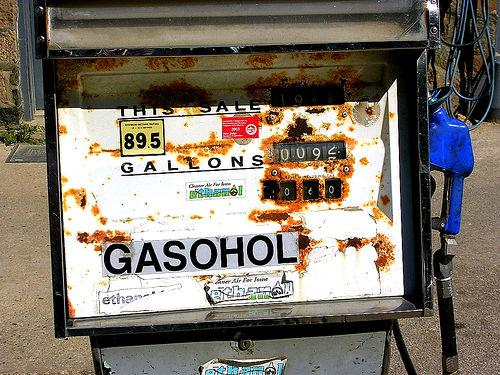A common feature of many environmental policies in the United States is vintage-differentiated regulation (VDR), under which standards for regulated units are fixed in terms of the units’ respective dates of entry, with later vintages facing more stringent regulation. In the most common application, often referred to as “grandfathering,” units produced prior to a specific date are exempted from a new regulation or face less stringent requirements.
As I explain in this post, an economic perspective suggests that VDRs are likely to retard turnover in the capital stock, and thereby to reduce the cost-effectiveness of regulation in the long-term, compared with equivalent undifferentiated regulations. Further, under some conditions the result can be higher levels of pollutant emissions than would occur in the absence of regulation. Thus, economists have long argued that age-discriminatory environmental regulations retard investment, drive up the cost of environmental protection, and may even retard pollution abatement.
Why have VDRs been such a common feature of U.S. regulatory policy, despite these problems? Among the reasons frequently given are claims that VDRs are efficient and equitable. These are not unreasonable claims. In the short-term, it is frequently cheaper to control a given amount of pollution by adopting some technology at a new plant than by retrofitting that same or some other technology at an older, existing plant. Hence, VDRs appear to be cost-effective, at least in the short term. But this short-term view ignores the perverse incentive structure that such a time-differentiated standard puts in place. By driving up the cost of abatement with new vintages of plant or technology relative to older vintages, investments (in plants and/or technologies) are discouraged.
In terms of equity, it may indeed appear to be fair or equitable to avoid changing the rules for facilities that have already been built or products that have already been manufactured, and to focus instead only on new facilities and products. But, on the other hand, the distinct “lack of a level playing field” — an essential feature of any VDR — hardly appears equitable from the perspective of those facing the more stringent component of an age-differentiated regulation.
An additional and considerably broader explanation for the prevalence of VDRs is fundamentally political. Existing firms seek to erect entry barriers to restrict competition, and VDRs drive up the costs for firms to construct new facilities. And environmentalists may support strict standards for new sources because they represent environmental progress, at least symbolically. Most important, more stringent standards for new sources allow legislators to protect existing constituents and interests by placing the bulk of the pollution control burden on unbuilt factories.
Surely the most prominent example of VDRs in the environmental realm is New Source Review (NSR), a set of requirements under the Clean Air Act that date back to the 1970s. The lawyers and engineers who wrote the law thought they could secure faster environmental progress by imposing tougher emissions standards on new power plants (and certain other emission sources) than on existing ones. The theory was that emissions would fall as old plants were retired and replaced by new ones. But experience over the past 25 years has shown that this approach has been both excessively costly and environmentally counterproductive.
The reason is that it has motivated companies to keep old (and dirty) plants operating, and to hold back investments in new (and cleaner) power generation technologies. Not only has New Source Review deterred investment in newer, cleaner technologies; it has also discouraged companies from keeping power plants maintained. Plant owners contemplating maintenance activities have had to weigh the possible loss of considerable regulatory advantage if the work crosses a murky line between upkeep and new investment. Protracted legal wrangling has been inevitable over whether maintenance activities have crossed a threshold sufficient to justify forcing an old plant to meet new plant standards. Such deferral of maintenance has compromised the reliability of electricity generation plants, and thereby increased the risk of outages.
Research has demonstrated that the New Source Review process has driven up costs tremendously (not just for the electricity companies, but for their customers and shareholders, that is, for all of us) and has resulted in worse environmental quality than would have occurred if firms had not faced this disincentive to invest in new, cleaner technologies. In an article that appeared in 2006 in the Stanford Environmental Law Journal (PDF), I summarized and sought to synthesize much of the existing, relevant economic research.
The solution is a level playing field, where all electricity generators would have the same environmental requirements, whether plants are old or new. A sound and simple approach would be to cap total pollution, and use an emissions trading system to assure that any emissions increases at one plant are balanced by offsetting reductions at another. No matter how emissions were initially allocated across plants, the owners of existing plants and those who wished to build new ones would then face the correct incentives with respect to retirement decisions, investment decisions, and decisions regarding the use of alternative fuels and technologies to reduce pollution.
In this way, statutory environmental targets can be met in a truly cost-effective manner, that is, without introducing perverse incentives that discourage investment, drive up costs in the long run, and have counter-productive effects on environmental protection.
It is not only possible, but eminently reasonable to be both a strong advocate for environmental protection and an advocate for the elimination of vintage differentiated regulations, such as New Source Review. That is where an economic perspective and the available evidence leads.



